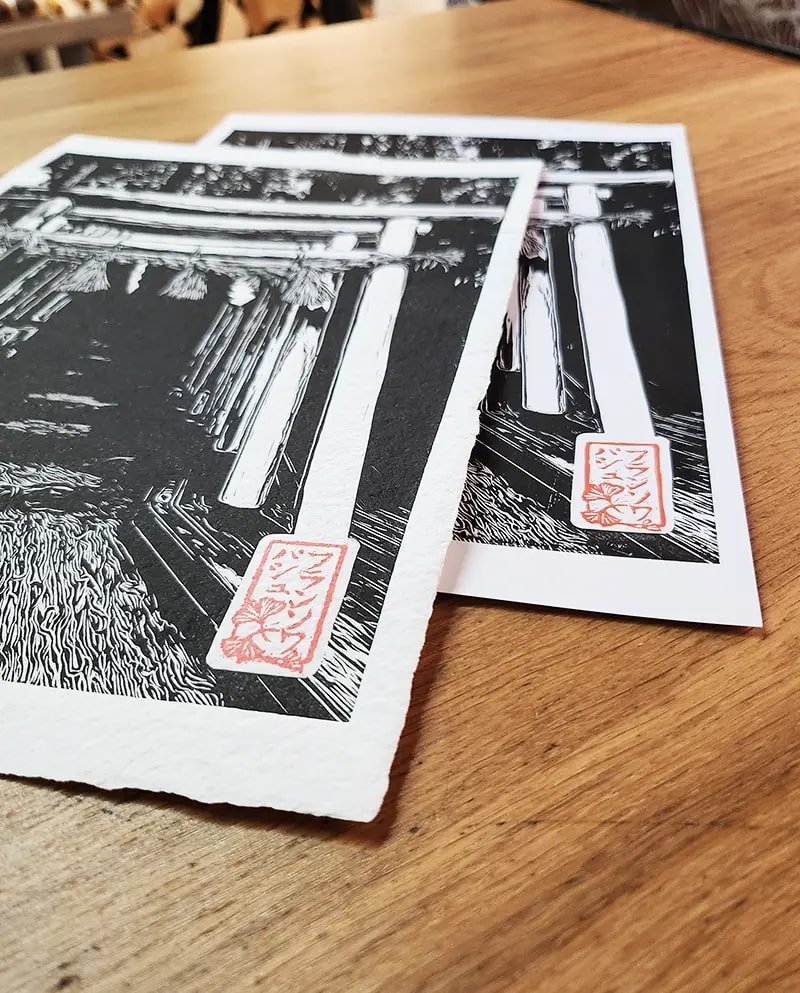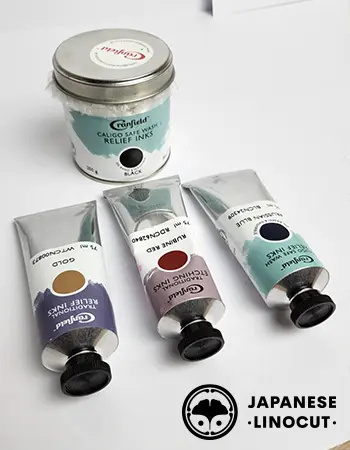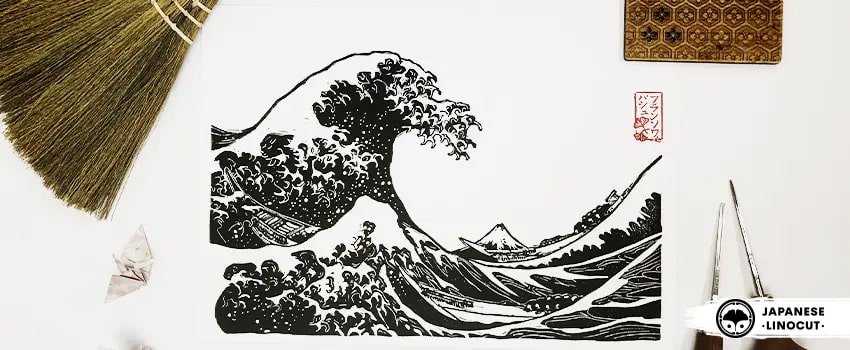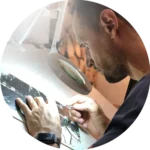When I create a linocut my aim is to transcribe a visual and an emotion into engraving. I dive into my photos taken in Japan and redraw the ones I like. Those for which memories and an atmosphere resurface. I then try to bring as much detail as necessary to make the visual conform to reality while stylizing and bringing movement to the composition using different gouges.

Tools and materials for my linocut

For this purpose I use several linocut gouges. A 0.5 mm Komasuki “u” gouge, two Pfeil gouges and a set of Mikisyo Japanese gouges cover a wide range of cuts, making them ideal for experienced users or even for inexpensive beginners.
In order to obtain beautiful prints, I start by making my own paper in my workshop. Depending on the desired result, I create a paper more or less thick and textured. Making your own paper is a time-consuming process, which is why the handmade paper option is more expensive than the smooth paper option.
For those who prefer smooth paper, I use high-quality 100% recyclable paper, made in France and FSC & Ecolabel certified. This label means that the production of this paper promotes ecologically sustainable and appropriate forest management, which is an important criterion for me. Whether I print my creations on this lightly satin-finished 250g paper or on handmade artisan paper, I include a signed, dated and stamped certificate of authenticity on the reverse of each linocut.
I also offer my creations on Washi or Wenzhou paper, which are very fine. On these papers, the certificate is on a separate sheet.

 I also use inks for relief printing with high coverage for deep blacks and vibrant colors that stay that way over time. These special savings size inks are washable with either soapy water or vegetable oil, which is once again environmentally friendly.
I also use inks for relief printing with high coverage for deep blacks and vibrant colors that stay that way over time. These special savings size inks are washable with either soapy water or vegetable oil, which is once again environmentally friendly.
Concerning the shipping, each linocut, once signed and completed with its certificate of authenticity, is inserted in a recyclable protective film that protects it from humidity. This pouch is then wrapped in a neat, hand-made packaging, then the whole is shipped in a rigid envelope to avoid any deterioration of the linocut during transport. I choose not to send my linocuts in cardboard tubes so that they arrive flat to the buyer.




